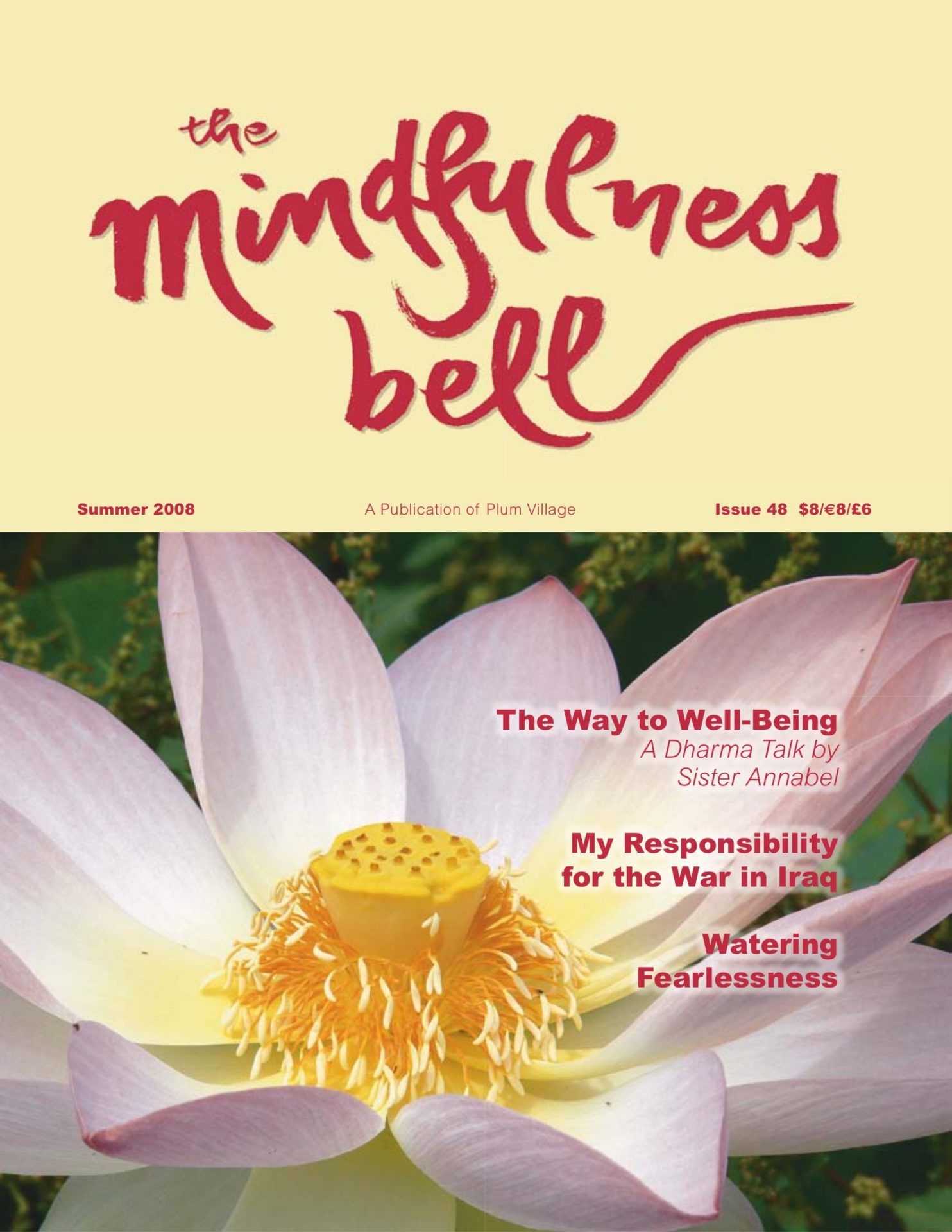By Judith Toy in June 2008
Dear Thay, dear Sangha,
It is impossible for me to read this issue without thinking of our recently deceased son, Jesse Toy. Everything I see and do is through the lens of his sudden passing on February 4. We are thankful for the hundreds of cards and letters from you, our Sangha — from Germany, Norway, the U.K., and across the U.S.
By Judith Toy in June 2008
Dear Thay, dear Sangha,
It is impossible for me to read this issue without thinking of our recently deceased son, Jesse Toy. Everything I see and do is through the lens of his sudden passing on February 4. We are thankful for the hundreds of cards and letters from you, our Sangha — from Germany, Norway, the U.K., and across the U.S. As Jesse’s father Philip and I walk the changing landscape of our grief and joy, there is one image we will not soon forget: Jesse’s pink baby blanket spread on the floor in the meditation hall, covered with colorful origami paper cranes, bright flowers of peace and hope.
This is the cream of our practice: the blanket — a symbol of birth and the ground of mindfulness; the color — pink for the new life of Jesse’s continuation; and the joyful cranes — emblems of our transformation body. The origami peace crane project was launched by our friend Teijo Munnich, a Soto Zen Dharma teacher. In the two months since Jesse left his physical body, we have fully celebrated his life. We were joined by former Sangha from Old Path Zendo in Pennsylvania at our Quaker service. We hosted an elegant Ceremony for the Deceased in Thay’s tradition at Cloud Cottage in North Carolina. Next week our Sangha will plant a weeping willow in honor of Jesse. Yet the cranes have touched us most. The care and cherishing in every fold of each colorful bird speak of Buddha, Dharma, Sangha. The birds on the blanket look like they’re having a party!
This issue of the Mindfulness Bell is like that blanket — a Dharma party. These pages are the blanket: the expression of the practice of our beloved teacher, Thich Nhat Hanh, of our blood and spiritual ancestors, and the skill and love of our editor, Janelle Combelic. Each story, poem, letter, and prayer is like one hopeful paper crane. Each crane is distinct, yet each is the same as the others. Tears fell on the origami paper as we folded together. And from our suffering fly the wings of peace.
Paper crane-making for those who are sick, dying, or have died springs directly from the suffering of World War II after the bombing of Hiroshima, Japan, and the little girl Sadako who touched hearts around the world with her suffering. So, too, in the stories of this issue the wars and tribulations of life are present. Every story, poem, and image tells us transformation is possible — that through our precepts, concentration, and insight, we can gently invite ourselves back to the present moment, this wonderful moment. In February, our son passed away. This spring the forsythia shines brighter than any spring before.
Sister Annabel Laity wrote us a letter to help prevent us from drowning in our grief after Jesse’s passing. She invited us to touch and learn to liberate the anguish of our ancestors who lost their sons in wars and other sudden, tragic ways. She wrote, “I have confidence you can transform this grief into a beautiful flower, and that your son lives on in the fruits of transformation that you realize.”
From out of our season of sorrow and wonder, Philip and I offer you crocus buds of gratitude, dear Thay, dear Sister, dear Sangha.
Judith Toy, True Door of Peace Associate Editor

